#byronism
Text
a post in honor of lord byron's 200th death anniversary —
the greeks were very fond of byron, who when he died in 1824 was a military commander and notable influence in their war of independence. as one of the most (if not the most) famous members of the philhellenist movement, byron used his poetic platform to try to remind people of greece's reputation as the source of western traditions in art and culture. the greeks then honored byron by decorating his coffin with a laurel wreath (below). they also erected statues for him, like this one below in athens depicting him being crowned with a laurel wreath (a symbol of greatness, especially in poetry/music [which historically overlapped]) by a female personification of greece. to this day, some statues of byron are annually wreathed in tradition, and the names byron/vyron/vyronas are still used in greece for roads, towns, and people in his honor.
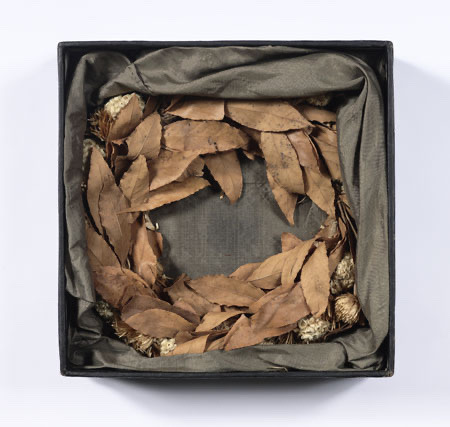

"’Tis sweet to win, no matter how, one’s laurels,
By blood or ink; ’tis sweet to put an end
To strife; ’tis sometimes sweet to have our quarrels,
Particularly with a tiresome friend:
Sweet is old wine in bottles, ale in barrels;
Dear is the helpless creature we defend
Against the world; and dear the schoolboy spot
We ne’er forget, though there we are forgot.
But sweeter still than this, than these, than all,
Is first and passionate love — it stands alone,
Like Adam’s recollection of his fall;
The tree of knowledge has been pluck’d — all ’s known —
And life yields nothing further to recall
Worthy of this ambrosial sin, so shown,
No doubt in fable, as the unforgiven
Fire which Prometheus filch’d for us from heaven."
— excerpt from Lord Byron's Don Juan, Canto the First (writ 1818, pub. 1819).
"The mountains look on Marathon –
And Marathon looks on the sea;
And musing there an hour alone,
I dreamed that Greece might still be free;
For standing on the Persians' grave,
I could not deem myself a slave."
— excerpt from Lord Byron's Don Juan, Canto the Third (writ 1819, pub 1821) — this stanza is part of a section often published on its own under the title "The Isles of Greece."
"Byron was at once a romantic dreamer, who wanted life to square up to his illusions, and a satirical realist, who saw what was before him with unusual clarity and found its contradictoriness amusing. The clash between the two Byrons is nowhere more noticeable than in his last writings, done on Cephalonia and at Missolonghi during the months before his death. There we see the Greece he dreams of, and the Greece which, in different ways, destroys him."
— excerpt from Peter Cochran's "Byron's Writings in Greece, 1823-4."
"Oh, talk not to me of a name great in story;
The days of our youth are the days of our glory;
And the myrtle and ivy of sweet two and twenty
Are worth all your laurels, though ever so plenty.
What are garlands and crowns to the brow that is wrinkled?
'Tis but as a dead-flower with May-dew besprinkled.
Then away with all such from the head that is hoary!
What care I for the wreaths that can only give glory!
Oh FAME! - if I e'er took delight in thy praises,
'Twas less for the sake of thy high-sounding phrases,
Than to see the bright eyes of the dear one discover,
She thought that I was not unworthy to love her.
There chiefly I sought thee, there only I found thee;
Her glance was the best of the rays that surround thee;
When it sparkled o'er aught that was bright in my story,
I knew it was love, and I felt it was glory."
— Lord Byron's "Stanzas Written on the Road Between Florence and Pisa" (November, 1821). What is illustrated here, and what I try to illustrate all throughout this assortment, is Byron's conflation of love and glory, and the idea that poetry and politics are both ways to deserve and achieve — not fame, but what fame seems to promise — love.
"But 'tis not thus—and 'tis not here
Such thoughts should shake my Soul, nor now,
Where Glory decks the hero's bier,
Or binds his brow.
The Sword, the Banner, and the Field,
Glory and Greece around us see!
The Spartan borne upon his shield
Was not more free.
Awake (not Greece—she is awake!)
Awake, my Spirit! Think through whom
Thy life-blood tracks its parent lake
And then strike home!"
— excerpt from Lord Byron's "On This Day I Complete My Thirty-Sxith Year" (1824).
"What are to me those honours and renown
Past or to come, a new-born people's cry
Albeit for such I could despise a crown
Of aught save Laurel, or for such could die;
I am the fool of passion, and a frown
Of thine to me is as an Adder's eye
To the poor bird whose pinion fluttering down
Wafts unto death the breast it bore so high –
Such is this maddening fascination grown –
So strong thy Magic - or so weak am I."
— although the much more popular and published "On This Day I Complete My Thirty-Sxith Year" is often believed to be Byron's last poem, the above is likely Byron's actual last poem. Like the former, it wasn't solely written for Greece, but for his page Lukas Chalandritsanos who he was in unrequited love (or lust) with. It is sometimes titled "Last Words on Greece" (named so by his friend and sometimes-editor Hobhouse).
#queud#literature#english literature#lord byron#romanticism#history#dark academia#poetry#aesthetic#greece#greek#greek history#poems#lit#on this day#byron#byronism#academia#greek war#war#web weaving
78 notes
·
View notes
Text
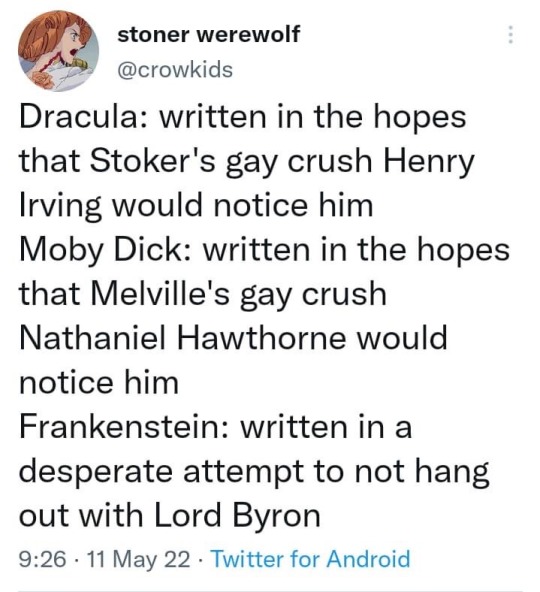
#Bram Stoker#Dracula#Henry Irving#Herman Melville#Moby Dick#Nathaniel Hawthorne#Mary Shelley#Frankenstein#Lord Byron
23K notes
·
View notes
Text

green slime be upon ye
#howl's moving castle#howl jenkins#sophie hatter#howl's niece mari#and the skull (already forgot again whether it was sullivan's or prince justin's)#i reread hmc and came to the following conclusion#movie howl: slightly whimsical but still very much a byronic hero#book howl: sopping wet pathetic meow meow#(he even turns into a literal wet cat at some point)#art tag
6K notes
·
View notes
Text

— Lord Byron, from “To the Countess of Blessington.”
4K notes
·
View notes
Text
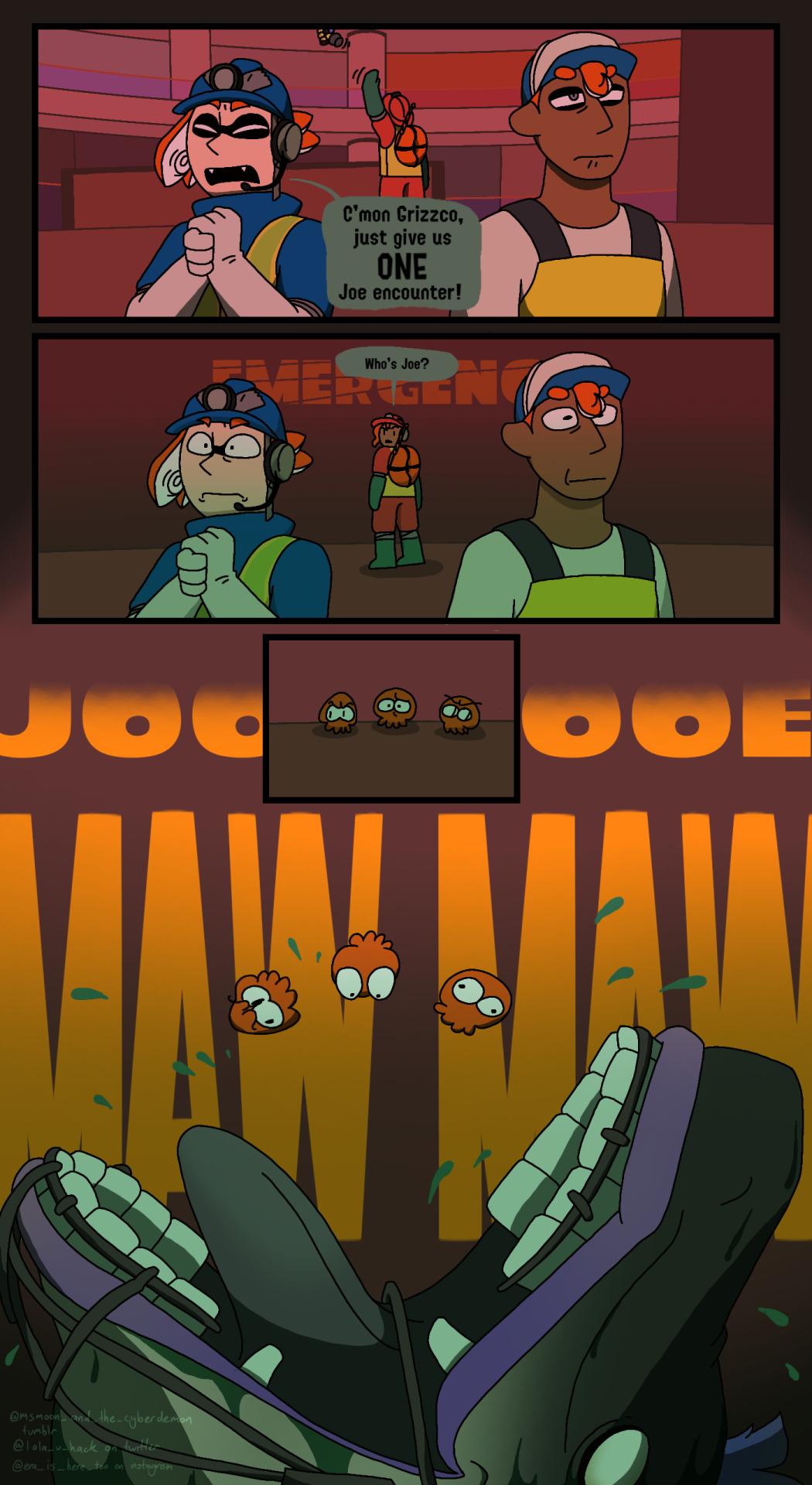
LET’S JOOOOEEE!
#my things#my doodlez#splatoon#goddam im finally done with this!#splatoon oc#octoling#inkling#salmonid#salmon run#splatoon 2#splatoon 3#big run#megalodontia#king salmonid#agent 4#agent 8#neo agent 3#my ocs are my children#waverley tag#byron tag#ripple tag#art#artists on tumblr#comics#splatoon art#splatoon fanart#salmon run fanart#grizzco#mr grizz
3K notes
·
View notes
Text
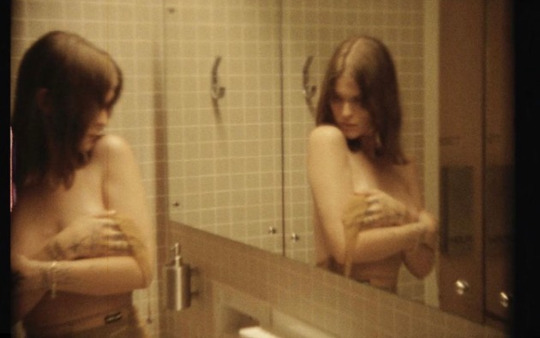

Ethel Cain shot by Byron Spencer for 10 Magazine Australia Issue 22
6K notes
·
View notes
Text
vampire who complains constantly about how difficult it is to access laudanum in the "so-called modern era." from their many, many complaints, it's clear they've gone to considerable difficulty over the past century maintaining a steady personal laudanum supply. their werewolf roomie is on the verge of holding an intervention. it is then casually revealed that laudanum has no intoxicating effect on bloodsuckers. the vampire just use it as a "spicy blood sauce"; it adds a nice kick
#it's later revealed they developed this flavor profile by falling in with a group of 'whiny gothic nitwits' in the early 1800s#who were 'annoying as hell and never shut the fuck up' but their blood was picante as fuck so whatever#(it's later revealed these 'gothic nitwits' consisted of lord byron and his literary contemporaries)
4K notes
·
View notes
Text
2K notes
·
View notes
Text
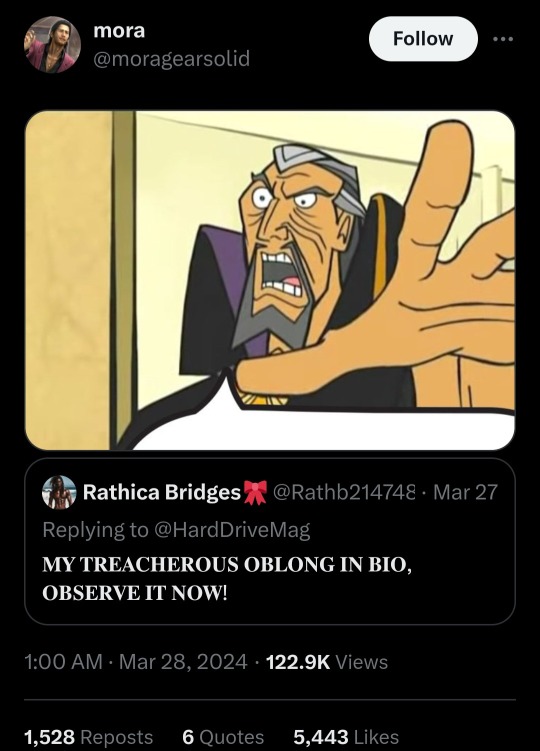
1K notes
·
View notes
Text
Some thoughts on the topic of Byronism, Byronic Heroes, Byron himself, and Mr. Darcy, Mr. Rochester, and their respective authors...
This was inspired after I was tagged in a post (thank you @bethanydelleman !) asking whether Mr. Darcy should be considered a Byronic Hero or not. I start with my response before delving off, but I refer back at the end and it all ties in.
On Mr. Darcy: to Byronic, or not to Byronic? That is the question...
Whether or not Mr. Darcy should be considered a Byronic Hero is a complex question, as is the concept of the Byronic Hero itself.
I think there two versions of Darcy, and general pop culture tends to conflate them. There is Misunderstood Darcy (pre-"redemption" arc; aka what many think of him pre-Elizabeth's discovery of his true personality) and then there is True Darcy (post-"redemption" arc; "oh he's not rude, just socially awkward and proud"). Misunderstood Darcy has aspects of the Byronic, whereas True Darcy isn't Byronic at all.
Is Darcy Byronic? I recognize that he has Byronic elements that would make the general populace view him as Byronically aligned, so it doesn't bother me too much if people call him such, but without fully going into the debateable qualifications of the Byronic Hero, I don't think he is truly Byronic.
My interpretation of "Byronic" as a concept:
"Byronic" is not an easily defined term. A lot of academics have their own preferred methods of classifying the Byronic and there is no one fixed definition or interpretation. "Byronic" originally referred, of course, to the themes and tropes presented in the characters of Byron, who was one of the best-selling and most influential writers of the 1800s.
However, even applying the term "Byronic" solely to Byron's own corpus is an act of over-generalization. Many of Byron's purported "Byronic Heroes" are drastically different from each other or have little in common, as Byronist Peter Cochran noted in his review of Atara Stein's "The Byronic Hero in Film, Fiction and Television" (https://petercochran.files.wordpress.com/2012/07/stein-green-lapinski-ii.pdf).
I believe there are two main types of Byronic Hero: the Broad Byronic and the Byronist's Byronic.
The Broad Byronic is the modern pop cultural conception of Byronism which has been applied to practically every rebellious anti-hero. You can find thousands of articles analyzing why thousands of characters are or aren't Byronic, from Jack Sparrow to Batman to Luke Skywalker and ad infinitum. If you try hard enough, anything can be Byronic.
The Byronist's Byronic is like the Orthodox Byronic, the more traditional sense of the term. Academics who take the stritcer Byronist's Byronic approach mainly focus on Byron's direct literary descendants, like the Brontës and Pushkin, who were thoroughly obsessed with Byron and whose works/characters are directly and obviously inspired by Byron's own works. Heathcliff and Eugene Onegin are the most commonly cited examples and are Byronic by all standards.
Over time, "Byronic" has taken on a life of its own, leading to what I dubbed as "the Broad Byronic." I personally believe there is sort of a Byronic spectrum wherein I would place Heathcliff on one end and maybe Mr. Rochester on the other, considering his salvation plotline, which I feel is huge to his character and which Heathcliff lacks (as he openly declares at the end, he has no regrets for his actions).
Peter Cochran's interpretation of the Byronic Hero
Peter Cochran was a writer, professor, & one of the best Byronists (scholars of Byron) & I often defer to his opinion. His website is a haven for Byronism. His interpretation of the Byronic Hero is very much representative of the orthodox Byronist's Byronic.
In his essay "Byron's 'Turkish Tales': An Introduction," Cochan provides a brief analysis of the Byronic Hero, which I have sectioned out the most relevant parts of:
"Much has been written about him; what few writers say is that he has so many facets that it's misleading to treat him as a single archetype. [..] The Byronic hero is a human dead-end. He is never successful as a warrior or as a politician [..] he is never successful as a lover. [..] The Byronic Hero is never a husband, never a father, and never a teacher [..] He bequeaths nothing to posterity, and his life ends with him. He is to be contrasted with the Shakespearean tragic hero, who has to be something potentially life-affirming, such as a father (Lear) or a witty conversationalist (Hamlet) or a great soldier (Macbeth, Coriolanus, Antony) or a lover (Romeo, Antony). If they were not such excellent people, their stories would not be tragic. The Byronic Hero is not tragic: he's just a failure, and leads on to the Superfluous Man of Russian literature - as Pushkin demonstrated, when he created the Byronically-fixated Eugene Onegin. [..] The Byronic Hero must never be witty, or be brought in contact with a critical intelligence [..] if he were, his tale would lose its imagined grandeur [..] In his gloom, failure, and rejection of humour The Byronic Hero aligns not with the heroes of Shakespearean tragedy but with the villains of Shakespearean comedy: Shylock, Malvolio, and Jacques. [..] I would suggest that The Byronic Hero is either a closet gay, or a poorly-adjusted bisexual - a problem that Byron would have known all about."
On Mr. Rochester and Mr. Darcy
In his introduction to Charlotte Bronte's Jane Eyre: Modern Critical Interpretations, legendary literary critic Harold Bloom explained that Mr. Rochester is Charlotte Brontë taking the Byronic Hero, killing him, and then rebirthing him. I fully agree with Bloom's interpretation:
"[Rochester's] transformation heralds the death of the Byronic hero [..] Rochester is, in this sense, a pivotal figure; marking the transition from the Romantic to the modern hero [..]"
I would argue that what Austen does to Mr. Darcy is a lighter, pre-Byronic attempt at doing what Brontë did with her transformation of the Byronic in Mr. Rochester. Women growing to sympathize with rude men and then (directly or indirectly) inspiring them to change for the better. Women taking the Byronic and not just going "I can fix him," but instead "I'll tell him off, and then maybe he'll fix himself." Like Darcy, Rochester has two versions, pre-redemption and post-redemption. This is not Byronic, but their pre-redemption selves are, with Mr. Rochester being much, much more so than Darcy, and being considered an archetypal Byronic Hero (rightfully so in my opinion, his come-to-God ending aside).
Also, what Darcy and Rochester are redeemed for differs greatly; I'm not equating their moral or personal failures, and I know that Rochester clearly has more of them (if any anti-Rochester, pro-Darcy fan is out there, pls don't kill me for comparing them).
On Austen and Byron:
Austen started writing P&P when Byron was 8-years-old, so she definitely wasn't influenced by the actual Byron in creating Mr. Darcy. However, Austen did read Byron's work later on, or at least his poem The Corsair, which was his best-selling work at the time and which is one of his most cliché "Byronic" works. She did write some works, like Emma and Persuasion, after reading The Corsair, but I haven't read these yet and I'm not the biggest Austen scholar, so I don't know if she was ever actually influenced by Byron or not. I'm positive that people have analyzed this before. Lots has been written on Austen/Byron. They also shared a publisher, though they never met.
On Byronic (the writer) VS Byronic (the writer's characters):
To further confuse us, "Byronic" by its literal definition can refer to the Byronic Hero OR Byronic as in Byron the Man. Many conflate these things, but they are separate. This adds to the case of the Broad Byronic. Many of Byron's contemporaries created characters that were direct and obvious tributes or parodies of him, including Mary Shelley's The Last Man, Percy Shelley's Julian and Maddalo, and Thomas Love Peacock's Nightmare Abbey. They all knew Byron personally. Mary Shelley openly put Byron into several of her novels, as explained in "Byron and Mary Shelley" by Ernest Lovell Jr. and "Unnationalized Englishmen in Mary Shelley's Fiction" by William Brewer. Other notable examples of this are Caroline Lamb's Glenarvon (Lamb was Byron's ex) and Dr. John Polidori's The Vampyre (Polidori was Byron's doctor) in which both titular characters were/are clearly known by readers to be caricatures of Byron. The Vampyre was the first vampire novel, and was not only a caricature of Byron but also based on Byron's short story Augustus Darvell. So all modern "Byronic" vampires, including Dracula, are really Byronic as in Byron the Man, although they sometimes may overlap with the Byronic Hero. As I said, easily confusing!
As many academics (and Lord Byron himself) have noted, many of Byron's fans wrongly conflated his characters with himself. Although many of Byron's works were indeed semi-autobiographical, he himself said that they were not intended as actual depictions of himself, and that he was annoyed when people thought so. Many fans who met him would write they were shocked to find he was nothing like the Byronic Heroes of his works. He was humorous, he smiled often, he was somewhat of a dandy and much of a rake (self-confessedly), he was an aristocrat, he was considered by many to be effeminate, etc. -- all elements that are not typically expected of the Byronic Hero.
In reference to his drama The Deformed Transformed (which contains the characters Satan and Caesar) Mary Shelley wrote to him in a letter:
"The Critics, as they used to make you a Childe Harold, Giaour, & Lara all in one, will now make a compound of Satan & Caesar to form your prototype, & your 600 firebrands in Murray's hands will be in costume." [John Murray was Byron's publisher]
Here, Mary mentions how many of Byron's readers expected him to be just like his characters Harold, Giaour, & Lara, who fans assumed were his self-insert characters, as they each had strong similarities. However, these characters were more similar to "alter-egos" than actual "self-portraits." My personal interpretation is that Byron was writing these very similar dark anti-heroes and villains in order to channel the darker aspects of his subconscious, or what Jung would call his Shadow Self, to try to purge or subdue it. Though he lived before the field of psychology officially existed, Byron was very interested in all things psychological, and he used his writing as a method of self-therapy (see: Touched with Fire written by psychologist Kay Jamison, which contains one of the most thorough & reliable psychoanalyses of him).
As Bloom explains in the essay I mentioned, and as countless other academics have explained, Charlotte Brontë and many other women in the early 1800s were obsessed with Byron and his works. Byron's English-speaking fan base has always been primarily female, especially in the beginning of his career. Byron's fans wrote him letters revealing their differing interpretations of him and his Byronic Heroes (but again, most didn't really differentiate between the two).
Likewise, I think the Brontë sisters may have conflated Byron with his Byronic Heroes. Mr. Rochester is such a strong example of Byron the Man and has so many similarities to him that when reading Jane Eyre I felt like I was reading Lord Byron fanfiction. It's clear that Charlotte Brontë was familiar with his biography. For example (one of countless), in chapter 17 Rochester sings what he calls "a Corsair song" -- as I mentioned earlier, The Corsair was one of Byron's greatest hits, and Jane Eyre is set around the time The Corsair was published, and Byron also wrote songs and was also known for his good voice.
Although the Brontë sisters were each influenced by him, they took their own individual spins on the Byronic, and their works reveal the dynamicism of these themes. In my opinion, Emily employs the Byronist's Byronic most raw and faithfully (and maybe even takes it further), Charlotte punishes, redeems, and transforms the Byronic with much influence from Byron the Man, and Anne presents the Byronic most critically and realistically, asking "what if the Byronic Hero were real, and really got married -- what would that look like?" and having perhaps the most (Broadly) Byronic heroine ever, who is also later redeemed by the end, and has her veil of Byronic mystery removed much like Darcy did.
#lord byron#byronism#byronic hero#mr rochester#charlotte brontë#criticism#literary criticism#analysis#my analysis#my essays#harold bloom#mr darcy#byron#byronic#literature#english literature#romanticism#mary shelley#peter cochran#jane austen#pride and prejudice#jane eyre#the brontes#my writing
104 notes
·
View notes
Photo
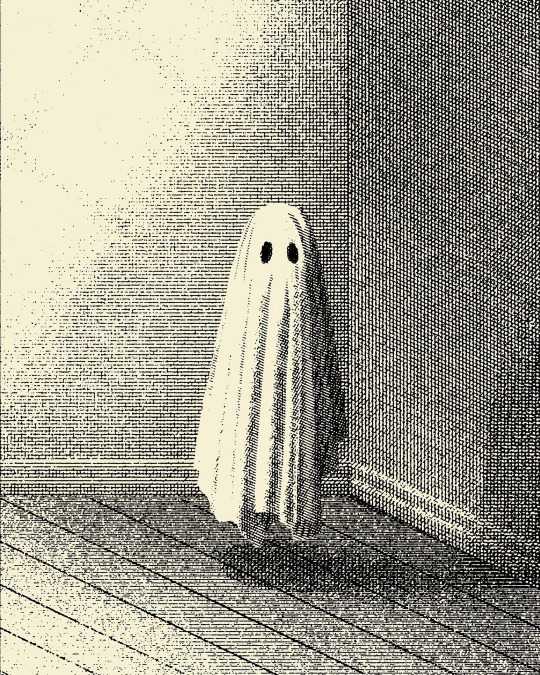
Byron Eggenschwiler
17K notes
·
View notes
Text

#p&p#p&p 2005#mr darcy#fitzwilliam darcy#elizabeth bennet#classic literature#books & libraries#english literature#literature#pride and prejudice#pride and predjudice 2005#lord byron#poems on tumblr#love poem#dark acadamia aesthetic#dark aesthetic#artists on tumblr#autumn#books and literature#books and reading#cinema#cottagecore#classic
3K notes
·
View notes
Text
The many uses of a Byronic Hero
chair ( Jane & Edward - Jane Eyre)
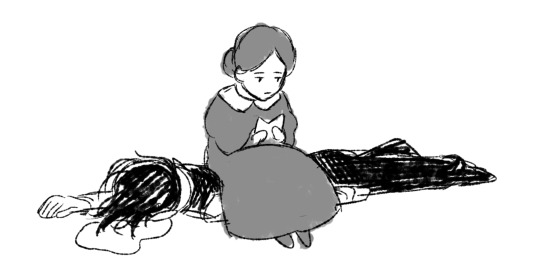
Pillow ( Christine & Erik - Phantom of the Opera)
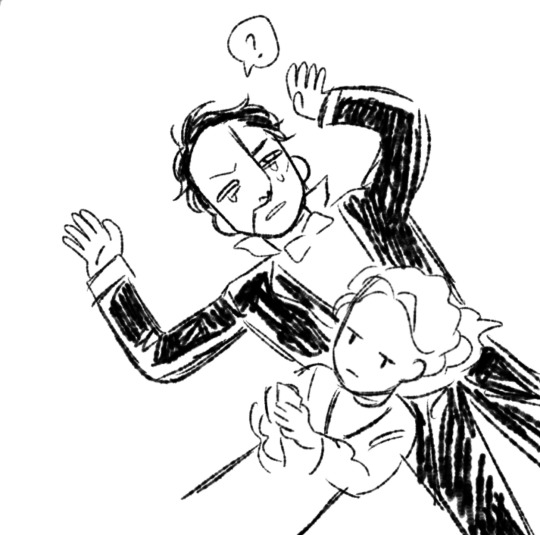
Car ( Catherine & Heathcliff - Wuthering Heights)

Water dispenser ( Edith & Thomas - Crimson Peak)

#jane eyre#mr rochester#edward rochester#charlotte bronte#classic litterature#gothic romance#crimson peak#gothic fiction#victorian gothic#wuthering heights#heathcliff wuthering heights#Phantom of the opera#Thomas Sharpe#edith cushing#erik the phantom#erik destler#byronic hero
2K notes
·
View notes
Text

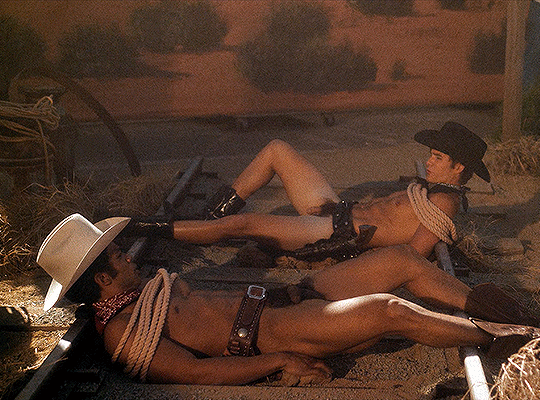

MINX 2.03 "It's Okay to Like It"
2K notes
·
View notes
Text
Midnight Pals: Ladies of Llangollen
Mary Shelley: sup fuckers
Shelley: what's going on here
Lord Byron: [tossing hair] ah mary what a vision you are
Lord Byron: [tossing hair] percy and i were just about to visit the ladies of llangollen
Shelley: why are my boyfriends sneaking around together behind my back
Mary Shelley: what the hell is this ladies of llangollen bullshit
Lord Byron: [tossing hair] ah see mary it's a most curious thing
Byron: [tossing hair] two women living together
Byron: [tossing hair] science simply can't explain it
Mary Shelley: they're lesbians byron
Byron: [tossing hair] no see it's these 2 women living together
Byron: [tossing hair] and their lady servant too
Byron: [tossing hair] explain that!
Mary Shelley: what's so hard to understand? it's a fuckin polycule
Mary Shelley: we're literally in one
Lord Byron: [tossing hair] lesbians?
Byron: [tossing hair] oh ho ho only cuz they haven't met me yet!
Byron: [tossing hair] isn't that right percy old man?
Percy Shelley: yes dear
Byron: [tossing hair] now we're off!
Mary Shelley: why're you going all the way to llangollen
Mary Shelley: we got perfectly good lesbians at home
Byron: [tossing hair] what?
Mary Shelley: you heard me fucker
Mary Shelley: byron are you just going to llangollen to hide from your ex girlfriend
Byron: [tossing hair] ha ha mary what a ridiculous notion
Byron: [tossing hair] ha ha just uh
Byron: [tossing hair] ridiculous
Mary Shelley: so it wouldn't bother you if caroline lamb also visited the ladies of llangollen then
Byron: [tossing hair] it wouldn't bother me at all
Byron: [pausing mid hair toss] why? is she there? what did you hear?
[at llangollen]
Byron: [tossing hair] delightfully devilish byron, caroline lamb will never think to look for you here
Caroline Lamb: [barging into llangollen] WHERE'S BYRON
Lamb: I KNOW HE'S HERE
Lamb: DON'T YOU LESBIANS LIE TO ME
Lamb: I CAN SMELL HIS AXE BODY SPRAY
William Wordsworth: i was so inspired by those ladies of llangollen that i wrote a sonnet about them
Wordsworth: "there once was a girl from nantucket..."
Mary Shelley: that's not a fuckin sonnet
Wordsworth: uh excuse me i think i know sonnets
#midnight pals#the midnight society#midnight society#percy shelley#mary shelley#lord byron#caroline lamb#william wordsworth
1K notes
·
View notes
Text
Please remember that Contessa Guiccioli, Byron's lover while he was in Ravenna, wrote her Recollections of Lord Byron after he died and these are some of the chapters:
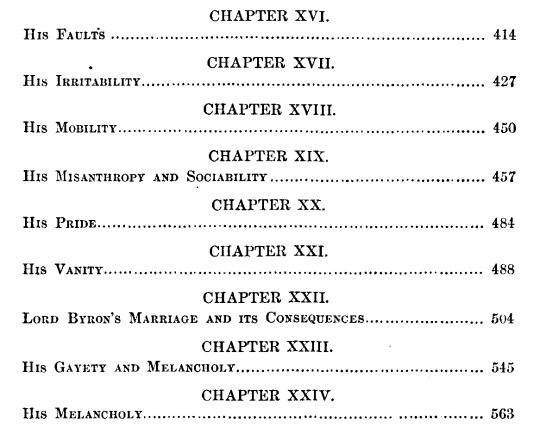
#“Lord Byron's marriage and its consequences”#lmao she wrote two chapters on his melancholy#Lord Byron#Romanticism#Poetry#Romanticism shitpost#English Literature#Literature#The romantics#geneva squad
5K notes
·
View notes